A Method Based on an Autoencoder for Anomaly Detection in DC Motor Body Temperature
Abstract
1. Introduction
2. Materials and Methods
2.1. Anomaly Dataset for DC Motor Body Temperature
2.2. Anomaly Detection Methods
2.2.1. Autoencoder
2.2.2. Three-Sigma Outlier (3-SgOut)
3. System Overview for Autoencoder-Based Anomaly Detection
4. Performance Evaluation
5. Experiments
5.1. Experiment Setup
5.2. Autoencoder for Anomaly Detection
5.3. Three-Sigma Outlier (3-SgOut) for Anomaly Detection
6. Discussions
7. Conclusions
Author Contributions
Funding
Institutional Review Board Statement
Informed Consent Statement
Data Availability Statement
Acknowledgments
Conflicts of Interest
References
- Chandola, V.; Banerjee, A.; Kumar, V. Anomaly detection: A survey. ACM Comput. Surv. 2009, 41, 1–58. [Google Scholar] [CrossRef]
- Bayraktar, C.; Gökçen, H. Comparison of classification algorithms for anomaly detection in energy optimization of high rack storage systems. Int. J. Manag. Inf. Syst. Comput. Sci. 2020, 4, 89–109. [Google Scholar]
- Zhao, J.; Liu, K.; Wang, W.; Liu, Y. Adaptive fuzzy clustering based anomaly data detection in energy system of steel industry. Inf. Sci. 2014, 259, 335–345. [Google Scholar] [CrossRef]
- Das, T.K.; Adepu, S.; Zhou, J. Anomaly detection in industrial control systems using logical analysis of data. Comput. Secur. 2020, 96, 101935. [Google Scholar] [CrossRef]
- Himeur, Y.; Ghanem, K.; Alsalemi, A.; Bensaali, F.; Amira, A. Artificial intelligence based anomaly detection of energy consumption in buildings: A review, current trends and new perspectives. Appl. Energy 2021, 287, 116601. [Google Scholar] [CrossRef]
- Theumer, P.; Zeiser, R.; Trauner, L.; Reinhart, G. Anomaly detection on industrial time series for retaining energy efficiency. Procedia CIRP 2021, 99, 33–38. [Google Scholar] [CrossRef]
- Lu, H.; Li, Y.; Mu, S.; Wang, D.; Kim, H.; Serikawa, S. Motor anomaly detection for unmanned aerial vehicles using reinforcement learning. IEEE Internet Things J. 2017, 5, 2315–2322. [Google Scholar] [CrossRef]
- Hiruta, T.; Maki, K.; Kato, T.; Umeda, Y. Unsupervised learning based diagnosis model for anomaly detection of motor bearing with current data. Procedia CIRP 2021, 98, 336–341. [Google Scholar] [CrossRef]
- Hızarcı, B.; Ümütlü, R.C.; Kıral, Z.; Öztürk, H. Fault severity detection of a worm gearbox based on several feature extraction methods through a developed condition monitoring system. SN Appl. Sci. 2021, 3, 129. [Google Scholar] [CrossRef]
- Jami, A.; Heyns, P.S. Impeller fault detection under variable flow conditions based on three feature extraction methods and artificial neural networks. J. Mech. Sci. Technol. 2018, 32, 4079–4087. [Google Scholar] [CrossRef]
- Takiddin, A.; Ismail, M.; Zafar, U.; Serpedin, E. Deep autoencoder-based anomaly detection of electricity theft cyberattacks in smart grids. IEEE Syst. J. 2022, 16, 4106–4117. [Google Scholar] [CrossRef]
- Givnan, S.; Chalmers, C.; Fergus, P.; Ortega-Martorell, S.; Whalley, T. Anomaly Detection Using Autoencoder Reconstruction upon Industrial Motors. Sensors 2022, 22, 3166. [Google Scholar] [CrossRef] [PubMed]
- Homayouni, H.; Ghosh, S.; Ray, I.; Gondalia, S.; Duggan, J.; Kahn, M.G. An autocorrelation-based lstm-autoencoder for anomaly detection on time-series data. In Proceedings of the IEEE International Conference on Big Data (Big Data), Atlanta, GA, USA, 10–13 December 2020; pp. 5068–5077. [Google Scholar]
- Kirchgässner, W.; Wallscheid, O.; Böcker, J. Estimating electric motor temperatures with deep residual machine learning. IEEE Trans. Power Electron. 2020, 36, 7480–7488. [Google Scholar] [CrossRef]
- Nandi, S.; Toliyat, H.A.; Li, X. Condition monitoring and fault diagnosis of electrical motors—A review. IEEE Trans. Energy Convers. 2005, 20, 719–729. [Google Scholar] [CrossRef]
- Abu Saad, S. The Untilisation of Information Available in a Sensorless Control System of an AC Induction Motor for Condition Monitoring. Ph.D. Thesis, University of Huddersfield, Huddersfield, UK, 2015. [Google Scholar]
- Chow, J.K.; Su, Z.; Wu, J.; Tan, P.S.; Mao, X.; Wang, Y.-H. Anomaly detection of defects on concrete structures with the convolutional autoencoder. Adv. Eng. Inform. 2020, 45, 101105. [Google Scholar] [CrossRef]
- An, J.; Cho, S. Variational autoencoder based anomaly detection using reconstruction probability. Spec. Lect. IE 2015, 2, 1–18. [Google Scholar]
- Chen, Z.; Yeo, C.K.; Lee, B.S.; Lau, C.T. Autoencoder-based network anomaly detection. In Proceedings of the Wireless Telecommunications Symposium (WTS), Phoenix, AZ, USA, 17–20 April 2018; pp. 1–5. [Google Scholar]
- Siddalingappa, R.; Kanagaraj, S. Anomaly detection on medical images using autoencoder and convolutional neural network. Int. J. Adv. Comput. Sci. Appl. 2021, 12, 148–156. [Google Scholar] [CrossRef]
- Kasunic, M.; McCurley, J.; Goldenson, D.; Zubrow, D. An Investigation of Techniques for Detecting Data Anomalies in Earned Value Management Data; Software Engineering Institute: Pittsburgh, PA, USA, 2011. [Google Scholar]
- Mirzaee, S.; Motagh, M.; Arefi, H.; Nooryazdan, M. Classification of agricultural fields using time series of dual polarimetry TerraSAR-X images. Int. Arch. Photogramm. Remote Sens. Spat. Inf. Sci. 2014, 40, 191–196. [Google Scholar] [CrossRef]
- Kohavi, R.; Provost, F. Glossary of terms journal of machine learning. Mach. Learn 1998, 30, 271–274. [Google Scholar]
- Abdoli, M.; Akbari, M.; Shahrabi, J. Bagging Supervised Autoencoder Classifier for Credit Scoring. Expert Syst. Appl. 2023, 213, 118991. [Google Scholar] [CrossRef]
- MATLAB; R2022a; The MathWorks Inc.: Natick, MA, USA, 2022.
- Moller, M.F. A scaled conjugate gradient algorithm for fast supervised learning. Neural Netw. 1993, 6, 525–533. [Google Scholar] [CrossRef]
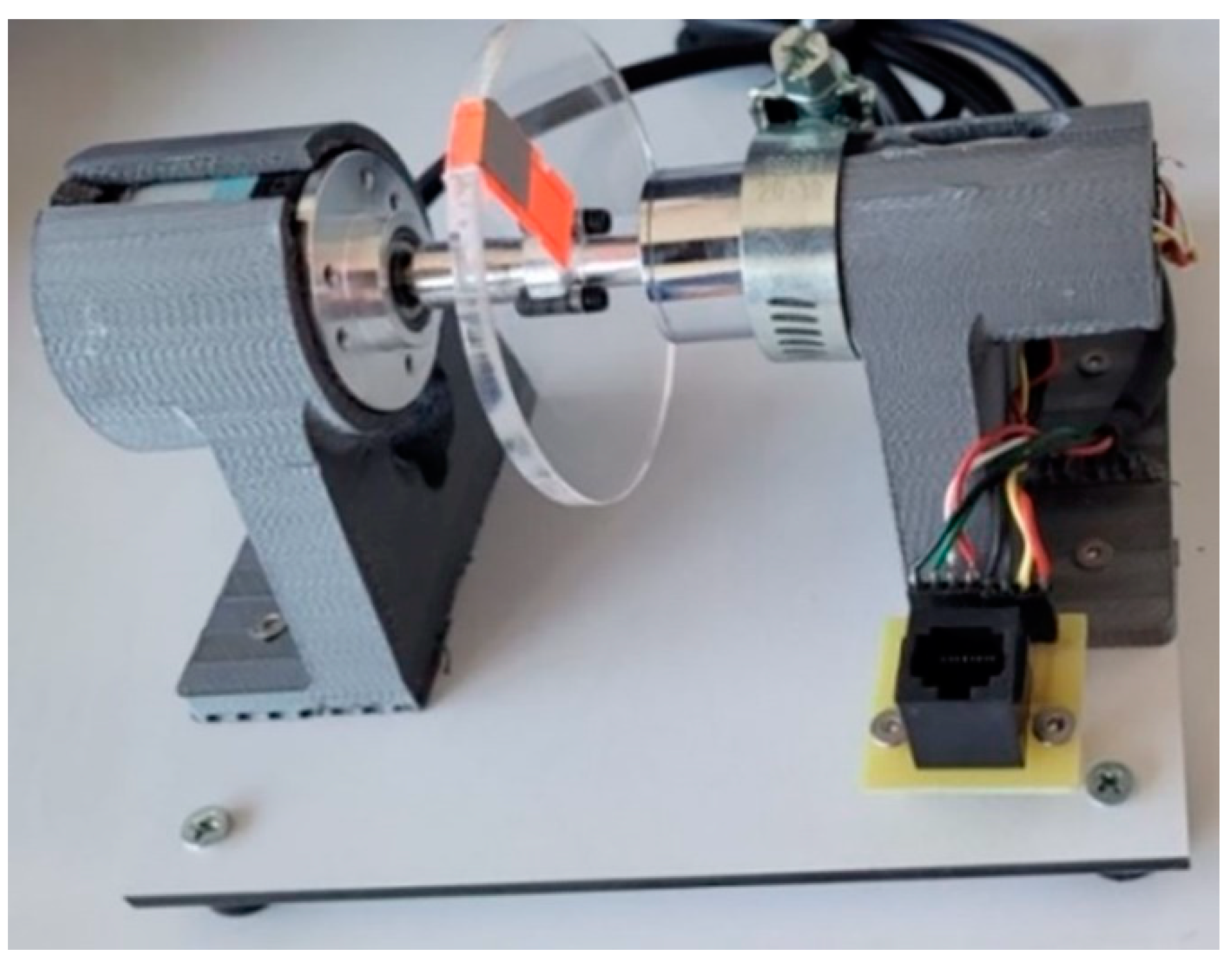
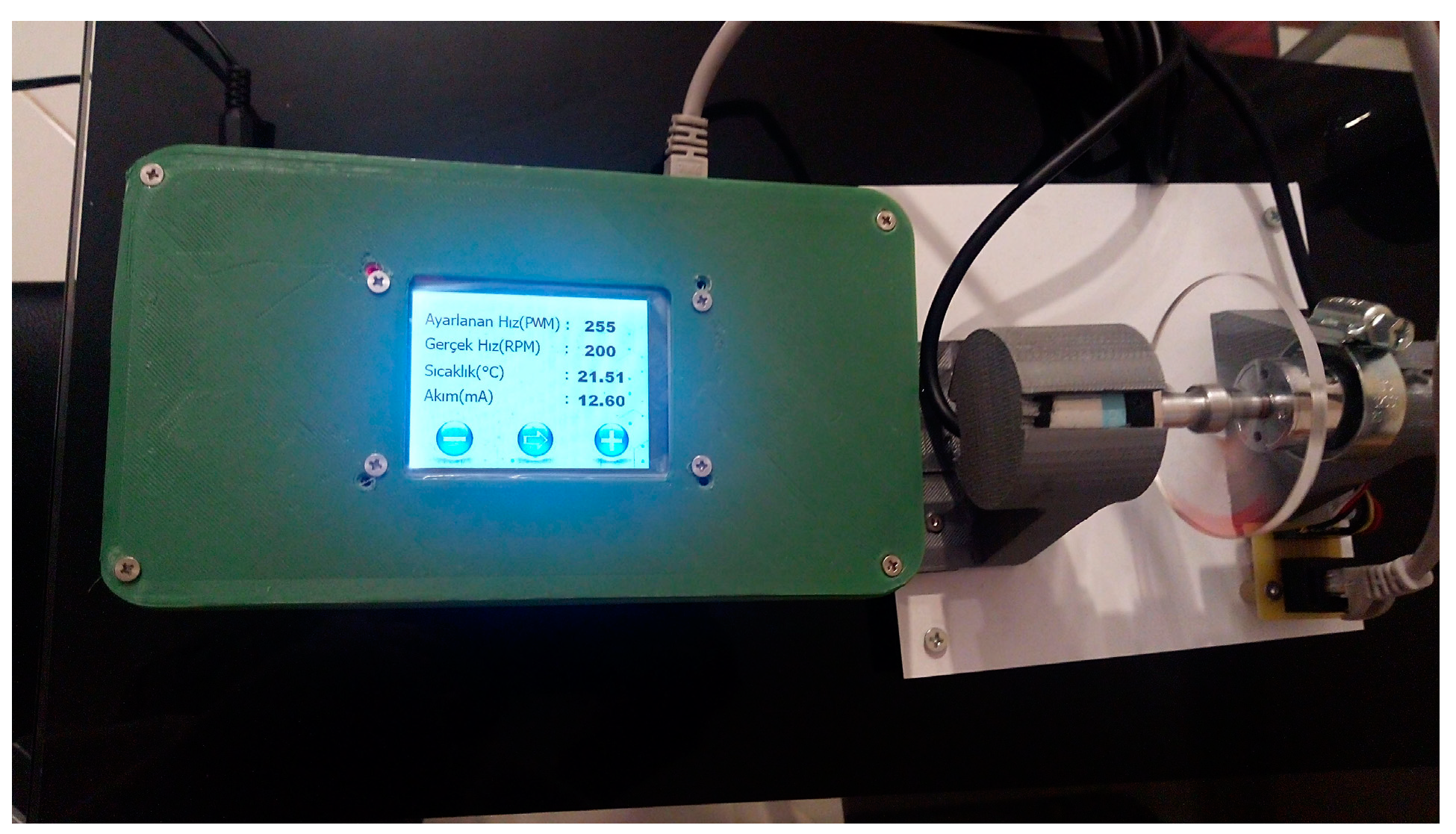
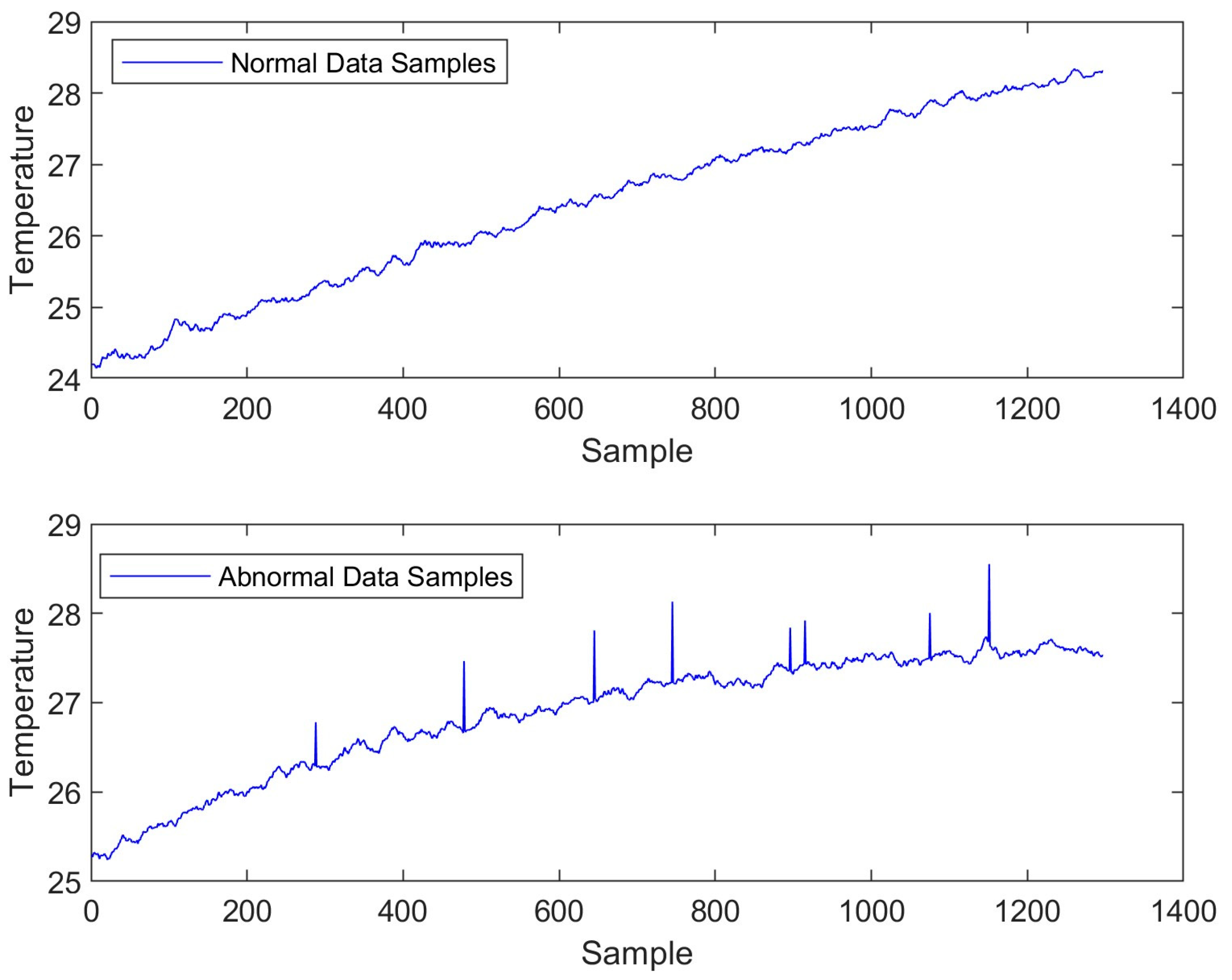
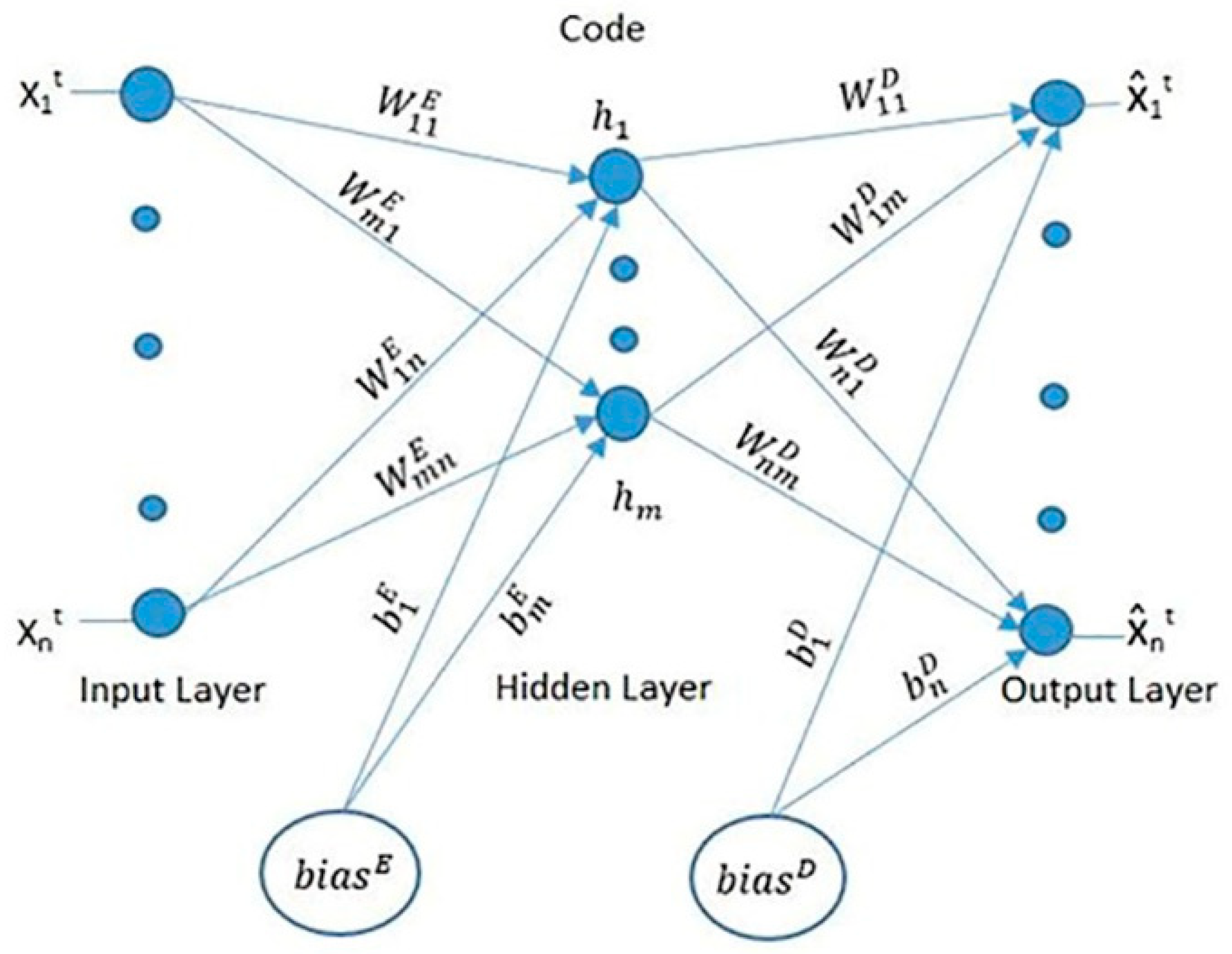
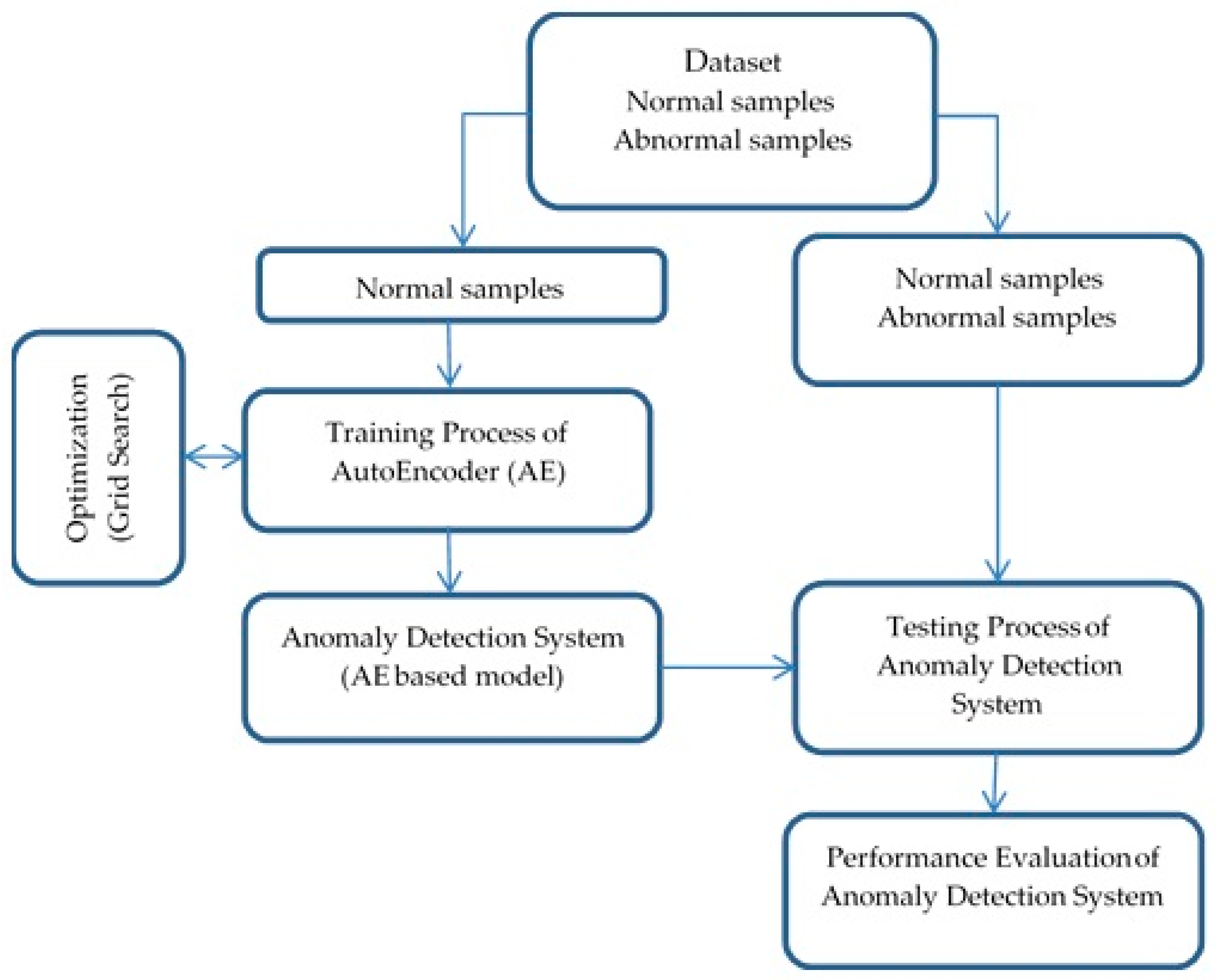


| Actual | |||
|---|---|---|---|
| Abnormal (Faulty) | Normal | ||
| Predicted | Abnormal (Faulty) | TP (True Positive) | FP (False Positive) |
| Normal | FN (False Negative) | TN (True Negative) | |
| Actual | |||
|---|---|---|---|
| Abnormal (Faulty) | Normal | ||
| Predicted | Abnormal (Faulty) | 2089 (TP) | 0 (FP) |
| Normal | 73 (FN) | 287,069 (TN) | |
| Actual | |||
|---|---|---|---|
| Abnormal (Faulty) | Normal | ||
| Predicted | Abnormal (Faulty) | 389 (TP) | 0 (FP) |
| Normal | 1773 (FN) | 287,069 (TN) | |
| Accuracy | Recall | Precision | |
|---|---|---|---|
| AE | 99.97% | 96.62% | 100% |
| 3-SgOut | 99.39% | 17.99% | 100% |
Disclaimer/Publisher’s Note: The statements, opinions and data contained in all publications are solely those of the individual author(s) and contributor(s) and not of MDPI and/or the editor(s). MDPI and/or the editor(s) disclaim responsibility for any injury to people or property resulting from any ideas, methods, instructions or products referred to in the content. |
© 2023 by the authors. Licensee MDPI, Basel, Switzerland. This article is an open access article distributed under the terms and conditions of the Creative Commons Attribution (CC BY) license (https://creativecommons.org/licenses/by/4.0/).
Share and Cite
Demircioğlu, E.H.; Yılmaz, E. A Method Based on an Autoencoder for Anomaly Detection in DC Motor Body Temperature. Appl. Sci. 2023, 13, 8701. https://doi.org/10.3390/app13158701
Demircioğlu EH, Yılmaz E. A Method Based on an Autoencoder for Anomaly Detection in DC Motor Body Temperature. Applied Sciences. 2023; 13(15):8701. https://doi.org/10.3390/app13158701
Chicago/Turabian StyleDemircioğlu, Emine Hümeyra, and Ersen Yılmaz. 2023. "A Method Based on an Autoencoder for Anomaly Detection in DC Motor Body Temperature" Applied Sciences 13, no. 15: 8701. https://doi.org/10.3390/app13158701
APA StyleDemircioğlu, E. H., & Yılmaz, E. (2023). A Method Based on an Autoencoder for Anomaly Detection in DC Motor Body Temperature. Applied Sciences, 13(15), 8701. https://doi.org/10.3390/app13158701






